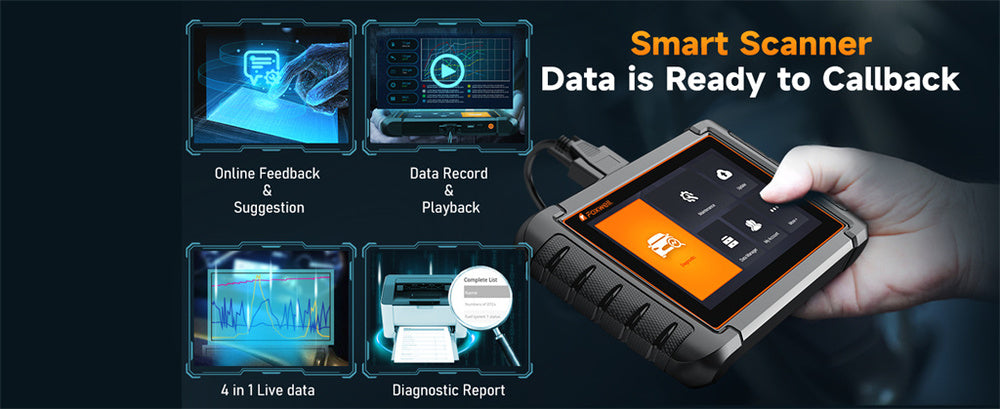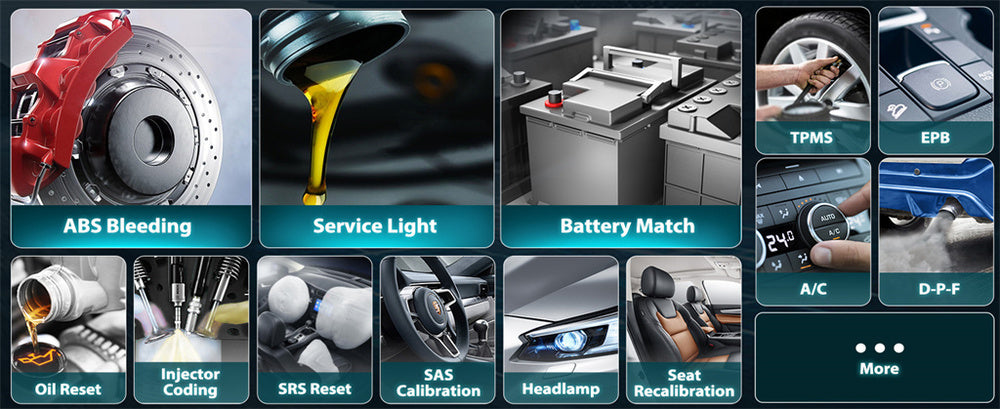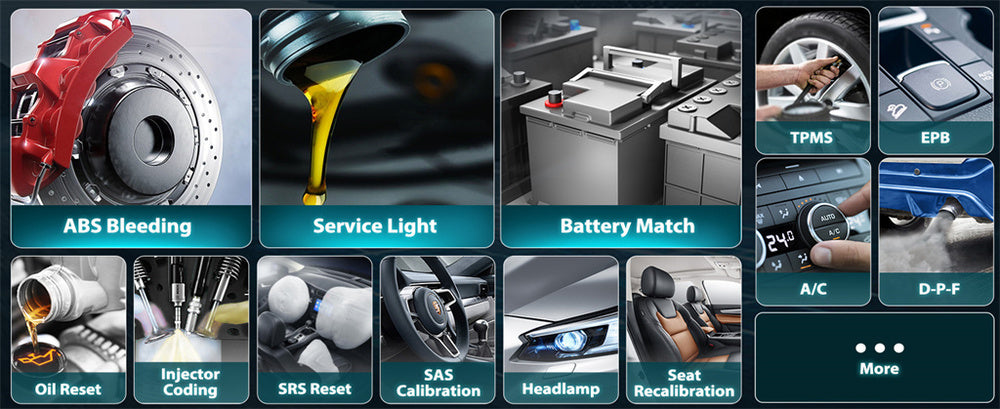Imagine being able to diagnose your car problems without ever visiting a mechanic; thanks to car diagnostic scanner dashboards, this dream has now come true! These devices allow you to monitor the health of your vehicle in real-time and identify issues early.
For instance, the Foxwell NT809TS scanner provides comprehensive diagnostics with user-friendly features; we have seven tips to make the most out of your scanner dashboard in diagnosing and preventing vehicle issues.
Regularly Review Diagnostic Data

Set Up A Routine:
Be proactive about scheduling diagnostic scans on a regular basis, whether that is once every month or before longer trips. Regular checks allow you to identify minor issues early and prevent major ones from emerging later on.
Consistent monitoring can help your vehicle run at peak performance and save on repair costs. Regular scans keep an eye on its condition and help identify any potential problems early.
Monitoring Key Systems:
Regular scans provide essential checks for key systems like the engine, transmission and electrical systems - they may uncover hidden problems that would not become evident during normal driving conditions.
Acknowledging and Interpreting Diagnostic Trouble Codes
Keeping tabs on diagnostic trouble codes (DTCs) can provide early signs of wear-and-tear, giving you time to address problems before they become serious. For example, routine scans can detect early wear-and-tear in the transmission system, giving you time to address potential issues before they arise.
Learn Common Codes:
Be familiar with common DTCs to understand any detected issues and their severity quickly.
Most scanners include an inbuilt code library or app to help explain these codes, making informed decisions about repairs easier.
Utilize Code Libraries:
Many car scanner dashboards feature in-built code libraries or apps to provide accurate interpretations of codes. Utilize these resources to achieve the best results in deciphering codes.
Understanding diagnostic trouble codes can save time and money by helping you recognize whether an issue requires immediate attention or you can wait until your next maintenance appointment.
Monitor Real-Time Data for Early Detection
Engine Performance:
Keep an eye on engine metrics such as RPM, temperature and load. Sudden changes could signal potential issues; real-time monitoring allows you to detect problems such as overheating or unusual engine behaviour early and take corrective action promptly.
Fuel Efficiency:
Track your car's fuel consumption regularly to monitor for potential issues in its engine or fuel system. Real-time monitoring allows you to identify trends and make adjustments that improve the economy, such as replacing a malfunctioning injector or cleaning out an air filter.
Battery Voltage:
Regularly inspect your battery voltage; fluctuating readings could signal alternator or battery issues that need attention. Staying aware of its health can prevent unexpected breakdowns and extend the life of your car's electrical system.
Implement Freeze Frame Data Capture Conditions:
Freeze Frame Data Records
This information gives diagnosticians valuable context when diagnosing, making it easier to pinpoint and address an issue more efficiently.
Analyse Parameters
Review parameters such as engine speed, coolant temperature and throttle position to identify and isolate potential causes of your vehicle's problem. Mining this data reveals patterns and correlations that will aid you in diagnosing and repairing it.
Leverage Graphing Features
Visualize Data:
Use graphing features to track changes in metrics over time and spot trends or irregularities that arise over time, such as gradual increases in engine temperature or fluctuations in fuel efficiency that might indicate potential issues that need addressing.
Spot Trends:
Graphing data like battery voltage or engine temperature can reveal patterns that are not easily detectable through static readings. Trend analysis allows you to anticipate potential problems and take preventative steps, keeping your vehicle running in top condition.
Run System Tests and Resets.
Check System Health
Test key safety components like ABS, airbags, and the engine to make sure they are operating as intended. Regularly performing these tests helps maintain essential safety systems so they are ready to perform when required.
Reset Service Indicators
Keeping your service indicators reset can keep them functioning optimally when required.After performing maintenance tasks, use your scanner to reset service indicators such as oil change lights for accurate maintenance tracking.
Doing this ensures accurate tracking and prevents unnecessary warnings about maintenance needs for your car.
Document and Review Diagnostic Data
Maintain Logs:
Keep an accurate log of all diagnostic scans conducted, including dates and times, as well as issues identified during each one. Doing this can help identify any recurring problems while documenting, help track vehicle health over time, and provide valuable data for future diagnostics.
Share It With Mechanics:
Keeping all this information accessible allows mechanics to provide the most up-to-date advice possible when diagnosing your vehicle.
Providing your mechanic with a log of diagnostic data can aid them in pinpointing and fixing issues more effectively. Comprehensive logs allow professionals to understand your vehicle's history and make accurate repair decisions.

Conclusion
Employing an effective car scanner dashboard can significantly enhance your vehicle maintenance routine. By regularly reviewing diagnostic data, understanding DTCs, monitoring real-time data, using freeze frame data for freeze frames, employing graphing features, performing system tests and documenting results efficiently, you can detect and prevent problems quickly and effectively. Investing in a quality scanner like the Foxwell NT809TS provides further capabilities that help maintain top condition on your vehicle.
FAQs
How can I get the most accurate readings from my car scanner?
Ensure your car is on a flat surface, the engine is off, and the scanner is properly connected. Regularly update the scanner's software for the best performance.
What common issues can a car scanner dashboard help diagnose?
A car scanner can diagnose issues such as engine misfires, battery problems, sensor malfunctions, and emission-related errors, helping you address them promptly.
Can a car scanner prevent vehicle issues?
While a car scanner can't prevent issues directly, it helps in early detection of potential problems, allowing you to address them before they become serious, thus preventing major repairs.




Leave a comment
This site is protected by hCaptcha and the hCaptcha Privacy Policy and Terms of Service apply.